Growing Turnips in July for Autumn Harvest UK: Complete Guide
July is the perfect time to sow maincrop turnips for a delicious autumn harvest. This comprehensive guide covers everything UK gardeners need to know about growing turnips in summer for fresh roots through winter.
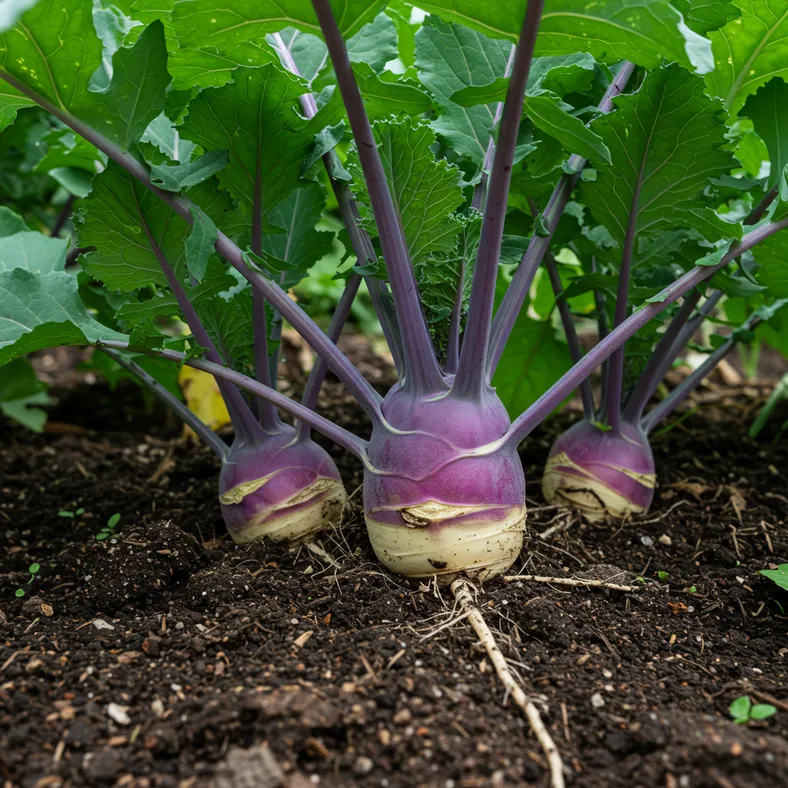
- Why July is Perfect for Turnip Sowing
- Choosing the Right Turnip Varieties for July Sowing
- Preparing Your Garden Bed for July Sowing
- Sowing Turnips in July: Step-by-Step Guide
- Caring for Your July-Sown Turnips
- Managing Common Problems with July-Sown Turnips
- Harvesting Your Autumn Turnips
- Storing Your Turnip Harvest
- Companion Planting with July-Sown Turnips
- Planning Your Next Year's Turnip Crop
July marks the perfect window for sowing maincrop turnips in the UK, setting you up for a bountiful autumn harvest that can extend well into winter. Unlike their spring-sown cousins that prefer cooler conditions, July-sown turnips are specifically bred to thrive in the remaining summer warmth whilst developing into robust roots perfect for autumn and winter meals.
This timing allows turnips to establish strong root systems during the warm soil conditions of late summer, then bulk up as temperatures cool in autumn. The result? Sweet, tender roots that are far superior to anything you'll find in the shops, plus nutritious leafy greens that make excellent winter vegetables.
Whether you're a seasoned gardener or just starting your vegetable growing journey, this comprehensive guide will walk you through everything you need to know about growing turnips from a July sowing to a successful autumn harvest.
Why July is Perfect for Turnip Sowing
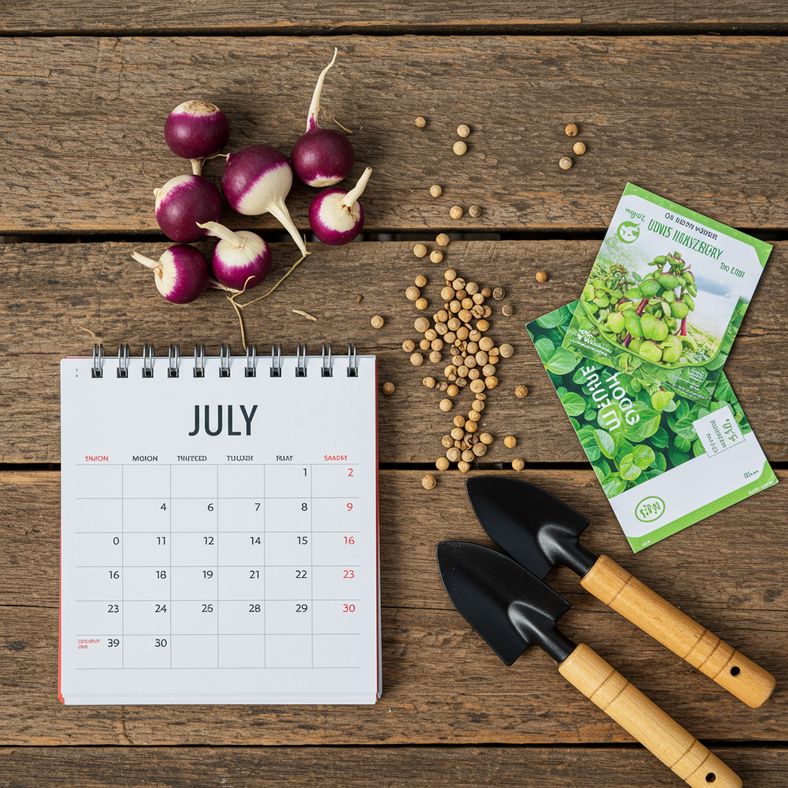
July represents the ideal sowing window for maincrop turnips in the UK, offering several distinct advantages over spring sowings. The warm soil conditions ensure rapid germination, typically within 7-10 days, whilst the remaining summer warmth allows plants to establish strong root systems before the cooler autumn weather arrives.
Maincrop varieties sown in July benefit from the natural cooling temperatures of autumn, which actually improves their flavour. As temperatures drop below 15°C, turnips develop a sweeter taste as they convert starches to sugars - a natural response that makes autumn-harvested roots far superior to summer crops.
The timing also works perfectly with UK growing seasons. July sowings avoid the common problems of spring crops, such as bolting in hot weather and flea beetle damage that peaks in late spring. Instead, your turnips will mature during the stable weather conditions of early autumn, typically ready for harvest from October onwards.
Furthermore, July sowing allows you to make the most of garden space. You can sow turnips in beds that have been cleared of early potatoes, broad beans, or other summer crops, making efficient use of your vegetable plot throughout the growing season.
Choosing the Right Turnip Varieties for July Sowing
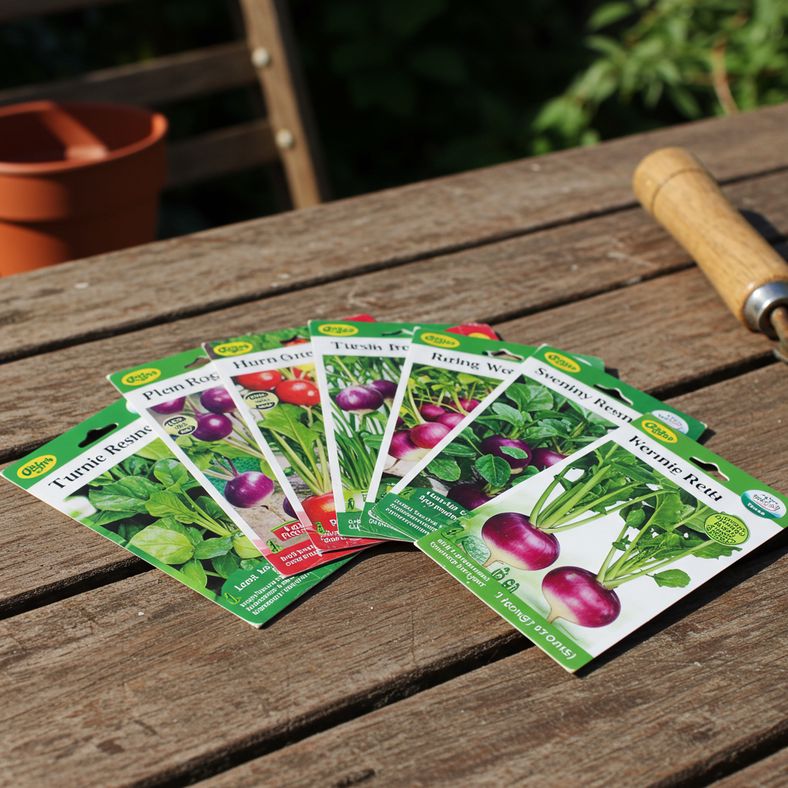
Selecting the appropriate turnip varieties is crucial for successful July sowings. Maincrop varieties are specifically bred for later sowing and autumn harvest, offering better disease resistance and superior storage qualities compared to early types.
Look for varieties described as 'maincrop' or 'winter hardy' on seed packets. These cultivars are designed to withstand the changing conditions from summer establishment through to autumn harvest. Popular choices include 'Green Top Stone', 'Purple Top White Globe', and 'Golden Ball'.
The Garden Turnip Purple Top White Globe Fresh Vegetable Seeds are particularly well-suited for July sowings, offering excellent flavour and good storage characteristics. These seeds produce the classic turnip shape with purple shoulders and white bottoms, maturing in approximately 55-65 days from sowing.
Japanese varieties like 'Oasis' and 'Temari Red' are also excellent choices, offering superior bolt resistance and sweeter flavours. These varieties tend to be more forgiving of variable weather conditions and produce consistently good results from July sowings.
When selecting seeds, always check the 'latest sowing' date on the packet. For autumn harvest, this should extend to at least mid-August, giving you flexibility in your sowing schedule. Avoid early varieties marked for spring sowing only, as these may not develop properly from July sowings.
Preparing Your Garden Bed for July Sowing

Success with July-sown turnips begins with proper soil preparation. Turnips prefer well-draining, fertile soil with a pH between 6.0-7.0. If you're unsure about your soil's pH, a simple soil test kit can help you determine if any amendments are needed.
Begin by clearing the chosen bed of any previous crops and weeds. July is often an ideal time to utilise beds that have been cleared of early potatoes, broad beans, or other summer vegetables. This succession planting makes excellent use of garden space and soil nutrients.
Work in a generous amount of well-rotted compost or aged manure, approximately 5-7cm deep. This improves soil structure, adds essential nutrients, and helps retain moisture during the crucial establishment period. Avoid fresh manure, which can cause forking in root vegetables.
Rake the soil to create a fine, crumbly seedbed. Remove any stones or debris larger than 2cm, as these can cause turnips to develop irregular shapes. The ideal soil texture should be fine enough for seeds to make good contact whilst remaining well-draining.
If your soil is heavy clay, consider adding sharp sand or grit to improve drainage. Conversely, very sandy soils benefit from additional organic matter to help retain moisture during the potentially dry conditions of late summer.
Sowing Turnips in July: Step-by-Step Guide
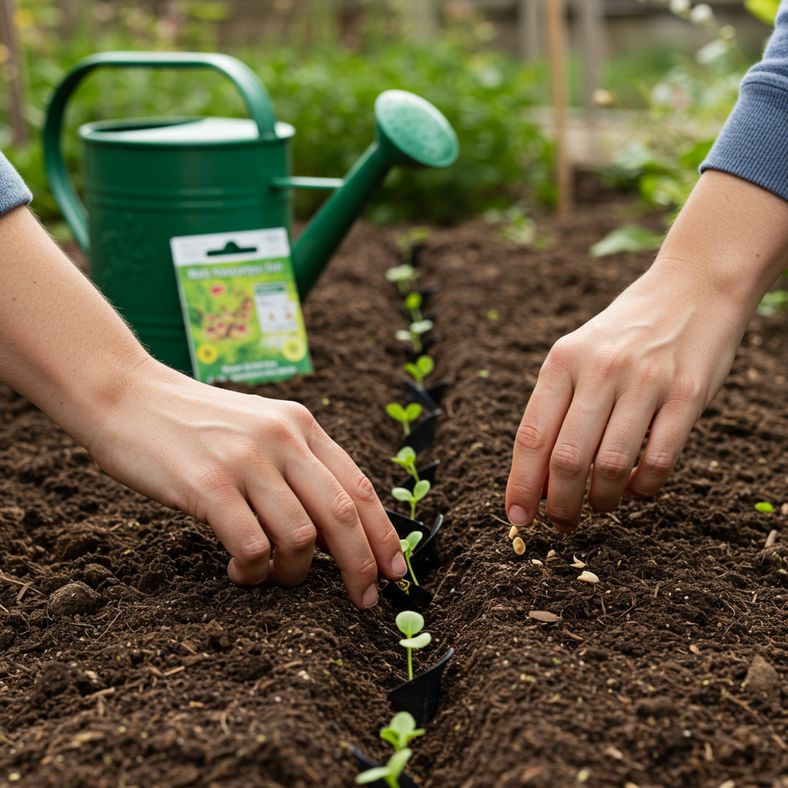
Timing your July sowing correctly is essential for autumn harvest success. The ideal window runs from early to mid-July, with the latest recommended sowing date being around July 20th for most UK regions. This timing allows approximately 10-12 weeks for root development before the first hard frosts.
Create shallow drills approximately 1cm deep using a hoe or garden cane. Space rows 30cm apart to allow adequate room for root development and easy access for maintenance. If you're short on space, turnips can be grown in wide rows with plants thinned to 15cm apart in all directions.
Sow seeds thinly along the drill, aiming for approximately 2cm spacing. This reduces the amount of thinning required later and minimises root disturbance. Cover seeds with fine soil and firm gently with the back of a rake or your hands.
Water the seeded rows thoroughly but gently to avoid washing seeds away. A watering can with a fine rose is ideal for this task. The soil should remain consistently moist but not waterlogged during the germination period.
For gardeners working with raised beds or containers, ensure your containers are at least 25cm deep to accommodate proper root development. Use a high-quality multi-purpose compost mixed with garden soil for best results.
Mark your rows clearly with labels indicating the variety and sowing date. This helps with planning harvest times and keeping garden records for future reference.
Caring for Your July-Sown Turnips
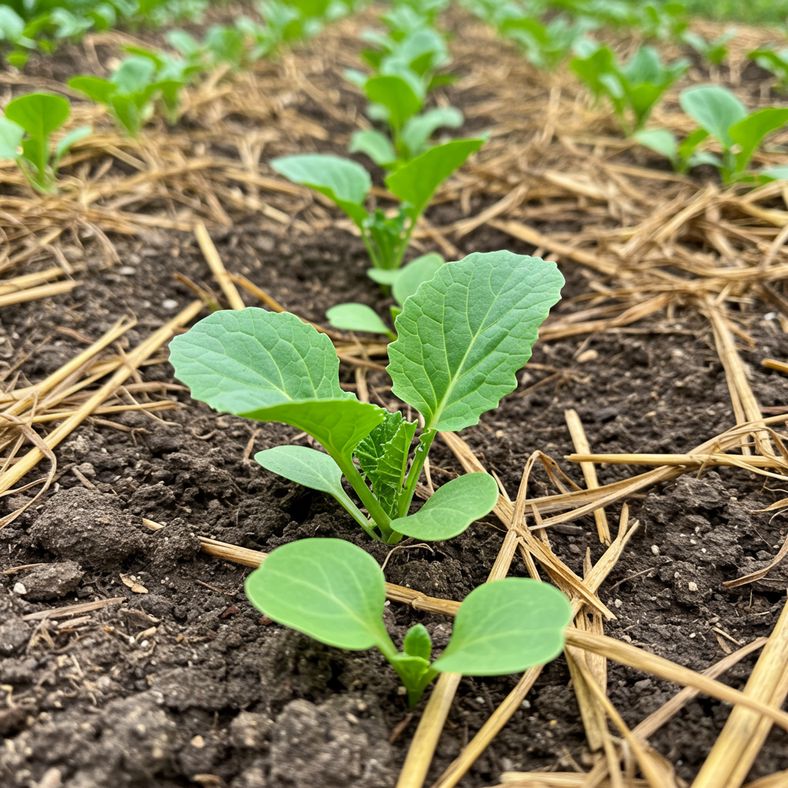
The weeks following germination are crucial for establishing strong, healthy turnip plants. Seedlings typically emerge within 7-10 days in warm July soil, appearing as small, rounded cotyledons followed by the first true leaves.
Watering is perhaps the most critical aspect of turnip care during the establishment period. July and August can be dry months, and consistent moisture is essential for proper root development. Water deeply but less frequently to encourage deep root growth, typically every 2-3 days in dry weather.
Thin seedlings when they reach approximately 5cm tall, removing weaker plants to leave the strongest spaced 10-15cm apart. This spacing allows adequate room for root development whilst maximising yields. Use the thinnings as microgreens in salads - they have a pleasant, peppery flavour.
Mulching around established plants helps retain moisture and suppress weeds. Use organic mulch such as straw, grass clippings, or compost, keeping it slightly away from plant stems to prevent pest problems.
Weeding is essential, especially during the early stages when turnips are establishing. Hand-weed carefully around plants to avoid disturbing developing roots. Regular hoeing between rows helps control weeds and maintains good soil structure.
Feed plants with a balanced liquid fertiliser every 2-3 weeks once they're established. A high-potassium feed promotes good root development - Levington Tomorite works excellently for root vegetables, not just tomatoes.
Managing Common Problems with July-Sown Turnips
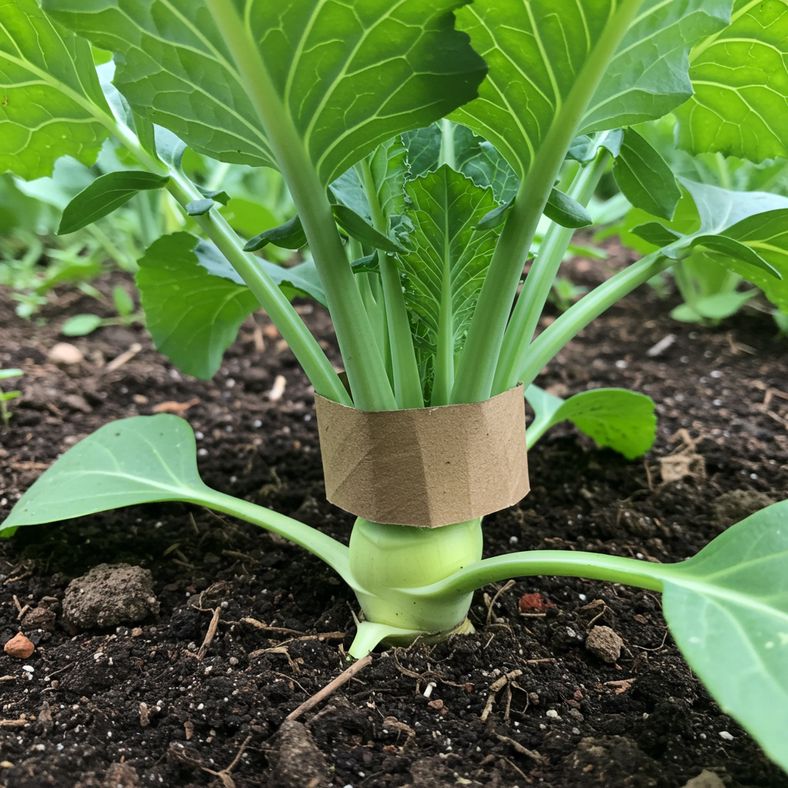
July-sown turnips face different challenges compared to spring sowings, but with proper management, these issues are easily addressed. Understanding potential problems helps you take preventive action and maintain healthy crops.
Flea beetles are less problematic in July than during spring sowings, but they can still affect young seedlings. These tiny jumping beetles create small holes in leaves, potentially weakening young plants. Use fine mesh or horticultural fleece to protect seedlings during their first few weeks.
Drought stress is a more significant concern for July sowings. Irregular watering can cause roots to split or become woody and bitter. Maintain consistent soil moisture throughout the growing period, particularly during dry spells in late summer.
Clubroot can affect turnips as members of the brassica family. This soil-borne disease causes swollen, distorted roots and stunted growth. Improve soil drainage and avoid growing brassicas in the same location for several years if clubroot is present.
Cabbage root fly larvae can tunnel into turnip roots, causing significant damage. Use protective collars around plant stems or cover crops with fine mesh during the peak laying period in late summer.
Bolting (premature flowering) is less common with July sowings but can occur if plants experience stress. Maintain consistent watering and avoid disturbing roots during cultivation to minimise this risk.
Harvesting Your Autumn Turnips

The anticipation builds as your July-sown turnips approach harvest time in early autumn. Typically, maincrop varieties are ready for harvest 10-12 weeks after sowing, placing your harvest window from late September through November.
Test for readiness by gently brushing soil away from the top of a few roots. Turnips are best harvested when they reach tennis ball size (approximately 7-10cm diameter). Larger roots may become woody and lose their sweet flavour, whilst smaller roots haven't reached their full potential.
Harvest on a dry day when possible, as this makes handling easier and reduces the risk of soil clinging to roots. Use a garden fork to carefully lift roots, working from the side to avoid damaging them. The JiveSnip Premium Titanium Garden Secateurs are perfect for cleanly removing foliage at harvest time.
Don't forget about the leafy greens! Turnip tops are delicious and nutritious, similar to spinach but with a slightly peppery flavour. Harvest leaves when they're young and tender, either at the same time as roots or as a separate cut-and-come-again crop.
Early autumn turnips can be left in the ground until needed, as light frosts actually improve their flavour. However, harvest before hard frosts (below -5°C) to prevent damage. In mild regions, covering with cloches or fleece extends the harvest period well into winter.
For continuous harvests, practice selective harvesting by taking the largest roots first and leaving smaller ones to continue growing. This extends your harvest period and ensures you always have fresh turnips available.
Storing Your Turnip Harvest
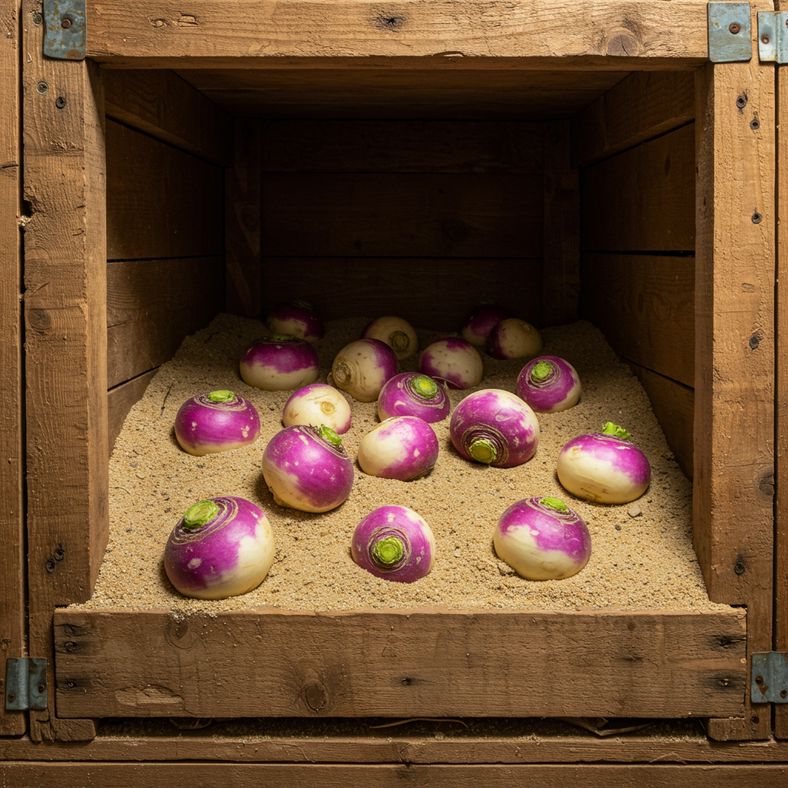
Proper storage extends the enjoyment of your July-sown turnips well into winter, making the most of your successful autumn harvest. With the right techniques, turnips can be stored for several months whilst maintaining their quality and nutritional value.
For immediate use, store harvested turnips in the refrigerator for up to 3 weeks. Remove leaves before storage, as they draw moisture from the roots. Keep roots in perforated plastic bags in the vegetable crisper drawer.
For longer-term storage, traditional root cellaring methods work excellently. Store turnips in boxes of slightly damp sand or peat-free compost in a cool, dark, frost-free location such as a garage or shed. Ideal storage temperature is 0-2°C with high humidity.
Layer turnips in storage boxes ensuring they don't touch each other, separating layers with damp sand or compost. Check stored roots regularly and remove any showing signs of deterioration to prevent spoilage spreading.
Freezing is another option for long-term storage. Blanch diced turnips in boiling water for 2 minutes, then plunge into ice water before freezing. Frozen turnips work well in soups, stews, and casseroles.
Don't overlook the option of leaving turnips in the ground during mild winters. Cover with a thick layer of straw or leaves and harvest as needed. This method provides the freshest possible turnips throughout winter.
Companion Planting with July-Sown Turnips
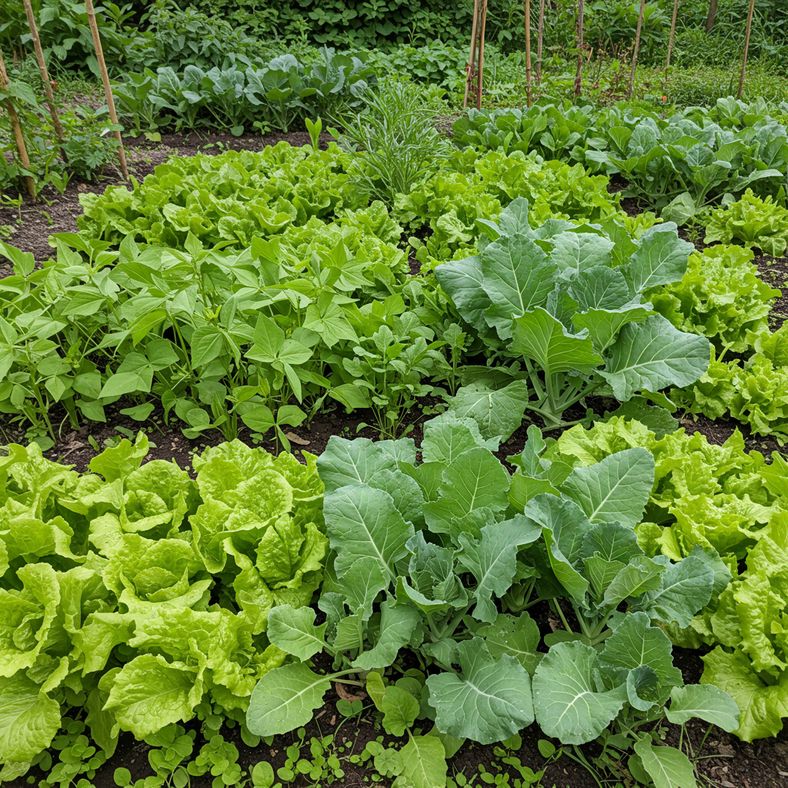
Strategic companion planting enhances the success of your July-sown turnips whilst making efficient use of garden space. Certain plants grown alongside turnips can improve soil health, deter pests, and maximise yields from your autumn harvest.
Legumes such as late-sown French beans make excellent companions for turnips. The beans fix nitrogen in the soil, benefiting the turnips' leafy growth, whilst the turnips' taproot helps improve soil structure. Garden Dwarf French Bean Opera Seeds are perfect for July sowings alongside turnips.
Aromatic herbs like rosemary and thyme planted near turnips can help deter flea beetles and other pests. These herbs also provide useful harvests for the kitchen whilst taking up minimal space.
Late-season lettuce and spinach work well as intercropping partners. Sow Little Gem Lettuce Seeds between turnip rows for quick harvests before the turnips need the full space.
Avoid planting other brassicas nearby, as they compete for similar nutrients and can increase pest and disease pressure. Also avoid planting near vegetables that might shade the turnips, such as tall beans or sweetcorn.
Marigolds and nasturtiums planted around the bed edges can help deter harmful insects whilst attracting beneficial predators. These flowers also add colour to the vegetable garden and provide cut flowers for the house.
Planning Your Next Year's Turnip Crop
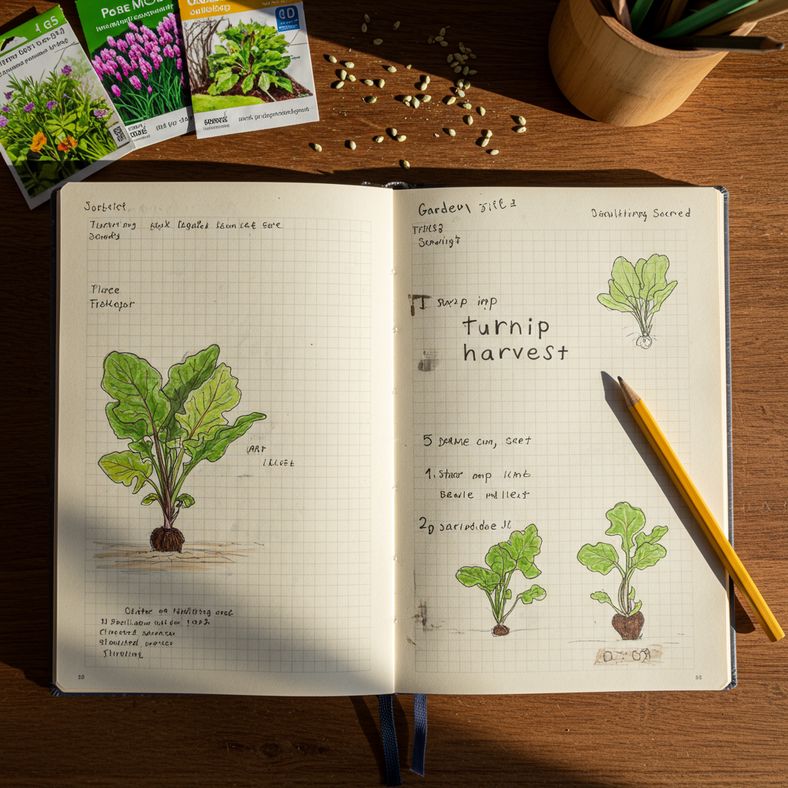
As you enjoy your successful autumn turnip harvest, it's the perfect time to plan for next year's crops. Good record-keeping and forward planning ensure even better results in future seasons.
Document your successes and challenges in a garden journal. Note which varieties performed best, sowing dates that worked well, and any problems encountered. This information becomes invaluable for future planning and helps you refine your techniques each year.
Consider the crop rotation implications of your turnip harvest. As brassicas, turnips should not be grown in the same location for at least three years to prevent soil-borne diseases and pest build-up. Plan where you'll grow turnips next year and what will follow in this bed.
Save seeds from your best-performing plants if you're growing heritage varieties. Allow a few plants to flower and set seed the following spring, then harvest and dry seeds for future use. This develops strains particularly well-adapted to your local conditions.
Order seeds early for next year's crop. Many gardeners find that ordering seeds in winter ensures the best variety selection and avoids disappointment from sold-out favourites. Store seeds in a cool, dry place until sowing time.
Consider expanding your turnip growing next year. Perhaps try different varieties, experiment with succession sowings, or integrate turnips into new areas of your garden. The success of your July-sown crop provides a solid foundation for future adventures in turnip growing.